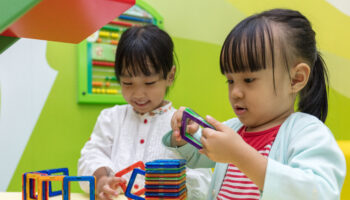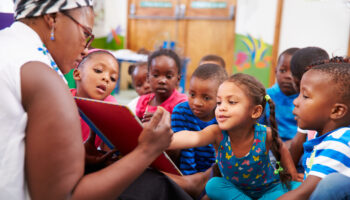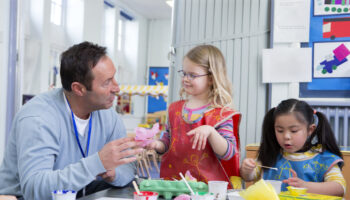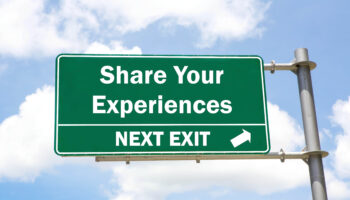By Lisa Mulliken
E-books are electronic books in digital form that can be read on a phone, tablet, computer or any other hand-held device. As e-books become more popular in classrooms and homes, there are many questions, and opinions, about using e-books instead of print books with children.
More advanced e-books often include music, sound effects, animation, added games or links, and the ability to tap, swipe or push buttons, and they can seem more like a toy than a book. All of these bells and whistles can become a distraction for children, leading the adult to focus more on the device as they remind children to listen to the story rather than push buttons. These distractions can affect the book reading experience, leading to fewer adult/child interactions and conversations around the story. A 2019 research study conducted by the University of Michigan on e-books suggests that print books encourage a higher quality reading experience and that young children and adults interact and talk more while turning pages of a print book.
From a baby mouthing a book to a preschooler picking out their favorite book from the shelf, the sensation of holding and feeling the weight of a book and turning the pages provides a tactile experience for children. Print books are easier on the eyes, are easier for children to access independently and have a nostalgia that e-books don’t provide. And print books don’t require batteries or chargers!
Remember, whether you’re using e-books or print books with children, it is the interaction between the adult and child that creates a high-quality book experience and creates lifelong book lovers! Encouraging conversation, asking open ended questions, providing real life connections, and reading a favorite book over and over promotes language development and early literacy skills.
“A book, being a physical object, engenders a certain respect that zipping electrons cannot. Because you cannot turn a book off, because you have to hold it in your hands, because a book sits there, waiting for you, whether you think you want it or not, because of all these things, a book is a friend. It’s not just the content, but the physical being of a book that is there for you always and unconditionally.”
― Mo Willems




